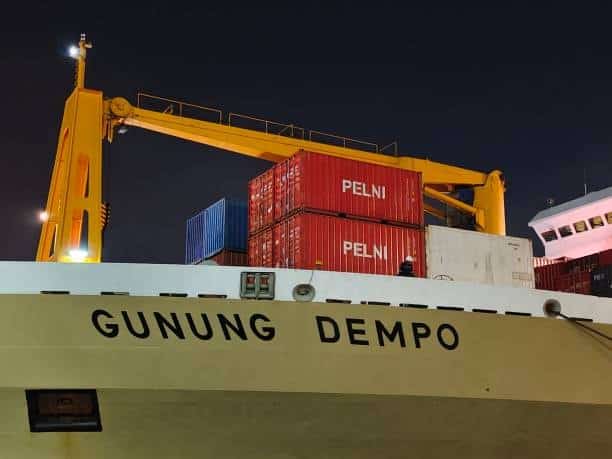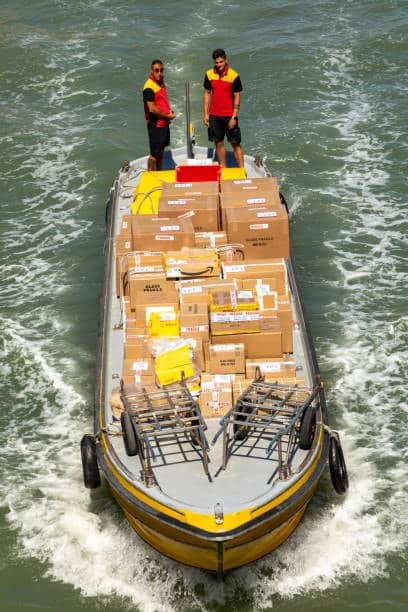Industries that contain shipping and equipment leasing face problems understanding per diem and demurrage because these terms exist in different business environments within the shipping industry and create separate financial effects. The two concepts utilize time-based fees in separate ways for different usages with substantial financial impact on various business and individual operations. The following text examines per diem and demurrage concepts from their basic definitions to their industrial applications and their essential distinctions alongside practical use scenarios. Thorough analysis of these concepts creates better clarity that assists professionals working with contracts as well as those who handle fleets or operate supply chains.
Understanding Per Diem: Definition and Scope
The Latin phrase “per day” expresses the meaning of per diem when referring to daily financial allowances or fees in multiple situations. This basic definition describes a standardized fee which is determined by measuring the period to 24 hours, which can vary based on how many free days are provided . The term exists in a wide range of industries because it functions across sectors that include tourism and transportation together with shipping operations and machinery rentals.

Companies typically provide employees with per diem allowances for paying working day expenses that include food expenses and accommodation costs and travel expenditures when workers need to travel for their jobs. A business organization provides employees with $50 of per diem during business travel because it pays expenses without asking for documentation. Standardized employee reimbursements become feasible through this usage which also provides them with convenient payment processes.
The logistics and transportation sector operates per diem according to different functions from its travel-related meanings. Per diem charges equipment users or retention holders of ocean containers, trailers, and rental vehicles a daily fee if the agreed period expires. This fee system encourages prompt equipment return or utilization to stop owners from bearing financial losses when items remain in possession. If shipping containers extend their stay beyond free time at ports the shipping line charges $100 daily fee.
Per diem proves flexible because it functions both as employee benefits when used for allowances and penalizing equipment use when it persists beyond specific boundaries. In all its applications the concept uses time measurement which generates charges based on billing rules, often involving a grace period before penalties apply .
Demurrage: A Closer Look at Its Meaning
The Old French word demorer translated into demurrage represents a maritime shipping concept which expanded into other logistic areas. Demurrage functions as a payment penalty which vendors must pay for extending their loading zones or unloading zones or returning equipment after the permitted duration ends in a harbor area or storage location, in addition to any detention charge applicable . To compensate for disruptions in both goods transporting and equipment access demurrage operates as a time-based fee system.
Demurrage used to refer exclusively to the period beyond agreed laytime during which a vessel stays at port for loading or unloading operations. A shipper who exceeds the allotted time for completion will trigger demurrage charges from the shipowner because of idle losses. Sluggish unloading procedures of bulk cargo carriers lead to $10,000 daily demurrage fees.

With time the terminology progressed to represent shipping of containerized cargo. In present usage demurrage describes how shipping lines and port operators bill for delayed container retention at terminals beyond the designated free days which normally ranges from 5 to 7 days before container removal or return. The usual rate for this service is $150 daily for each container though it will increase with prolonged durations of container storage.
Demurrage exists only as a fee because it functions as a monetary consequence without the flexibility of per diem. The penalties exist solely to punish wasteful behavior while maintaining the connection of available resources.
Related Reading: what is demurrage
Historical Context: Origins of the Terms
The roots of per diem and demurrage reveal their distinct purposes. During Roman times societally speaking the concept of per diem functioned as a language to represent both daily military subsistence and monetary pay. Evolution through medieval European times led demurrage to develop its modern meaning in financial agreements and contracts. The historical changes in usage patterns make the term function as both a benefit payment and a charge in modern times.

During the era of expanding 17th and 18th-century global trade tables and payments known as demurrage began to appear in maritime industry transactions. Given the increased importance of ships for economic progress ports delays became very costly. With the goal to defend losses from unproductive ships shipowners implemented demurrage clauses in charters thus establishing its presence in maritime legal practice. Ethical concepts were transformed with containerization in the 20th century because the focus shifted from vessels to cargo containers.
Demurrage specializess itself since its origin as a distinct charge based on operational delays separate from per diem’s more broad generalization as a time-based concept.
Applications Across Industries
Per Diem in Action
Per Diem maintains its flexibility when applied across different business sectors.
- Companies adopt per diem rates to provide travel and employment reimbursement coverage for working expenses suffered by their staff members during business trips. According to the U.S. General Services Administration (GSA) annual data shows New York City agencies receive $66 as per-diem rates for meal and incidental costs until 2025.
- Trucking and construction companies must apply per diem charges to their equipment rental fees when their equipment like bulldozers exceeds their agreed-upon rental period. Each day that(delays)the construction work will result in a per diem bill of $200 from the contractor.
- Shipping companies charge container detention fees which they refer to as detention charges after free time expires outside the terminal gates while demurrage relates to fees inside the port area.
Demurrage in Practice

Demurrage represents a specific payment system that remains essential although its scope is defined more specifically:
- The shipping of grains through maritime vessels would require a 10-day period to load the cargo. The shipping company will apply shipping charges to the consignor because the port’s control delays container removal by three days beyond the approved time.
- The delay in container removal at Los Angeles Port without proper retrieval within five free days would lead to $200 per day demurrage expenses.
- Demurrage from railroads exists for freight cars that remain beyond their allowed time at rail sidings to maintain rail turnover efficiency.
Per diem covers multiple payment purposes but demurrage serves only as a penalty for shipping delays in transportation operations.
Key Differences Between Per Diem and Demurrage
The similarities between per diem and demurrage end when examining their fundamental differences which stand as clear opposites.
- Per diem functions as either settlement reimbursements like travel expenses or as fees used for equipment maintenance but demurrage only serves as a penalty charged for persistence.
- The application range for per diem extends beyond shipping and transport to encompass travel, leasing, logistics but demurrage remains limited to storage fees that accumulate due to shipping and transport delays at terminals and ports.
- The shipping sector applies the cost of detention to storage outside the terminal boundaries and uses demurrage for storage within the terminal area.
- Rates for per diem serve both beneficial payment and cost negotiation opportunities whereas demurrage charges operate as a non-negotiable punitive fee after its activation.
- The time basis for calculating rates differs for per diem since it uses calendar days but demurrage employs operational timelines such as laytime or free days.
The correct differentiation between these terms matters for businesses who need to prevent mix-ups during contractual binding or negotiation processes.
Practical Examples in Shipping
A container shipment starting from Shanghai and bound for Rotterdam provides a practical illustration.
- The consignee obtains the container at the port during the 7-day free period yet places it in warehouse storage for 10 days before its return. The transportation provider gives five cost-free days for equipment storage outside terminal grounds. The 5-day extension of container retention results in a $100 daily cost that reaches a total amount of $500.
- The consignee leaves the container at the port storage facility as they do not collect it for twelve days triggering demurrage charges. Free storage of seven days expires when the 5-day period exceeds resulting in $150 daily fees amounting to $750.
The per diem fee applies to equipment retention outside the port area whereas port congestion attracting charges from demurrage fees. Chances for misunderstanding these port charges might result in unanticipated expenses if operations are not conducted in a timely manner .
Financial Implications for Businesses
The fees associated with both per diem and demurrage produce substantial financial burden on businesses. The management of these fees by companies requires predictive thinking and planning.
- Bad resource planning through equipment leasing leads to high per diem costs yet port congestion causes companies to pay demurrage fees.
- Free days coupled with rate limitations which are expressed clearly during contract negotiation help businesses reduce their financial exposure. Certain organizations secure longer unaffected periods in advance to shield themselves from the impact of seasonal demurrage increases.
- An unplanned fee push the already constrained budget into a state of turmoil. The total sum of $5,000 in combined demurrage and detention expenses could create financial troubles for a small importing company.
The approval process of proactive monitoring along with optimized operational flows results in substantially reduced expenses.
Legal and Contractual Considerations
All definitions related to per diem and demurrage terms are specified through contractual agreements. Shipping contracts through bills of lading and charter parties specify the length of free time together with payment rates and legal responsibilities. Legal disagreements about cost liability typically develop between shipper and consignee and carrier entities especially during time delays caused by custom holds or labor actions. The validity of contractual terms depends on whether force majeure occurs because courts normally support original agreements.
The Internal Revenue Service of the United States implements through its guidelines the rules for tax-permissible per diem payments together with required documentation. Misclassification risks audits or penalties, especially if the fixed rate for per diem payments does not align with IRS guidelin .
Understanding Free Time in Shipping
Detention and demurrage fees as well as per diem expenses become relevant only after mastering the definition of free time. The space from which beneficial cargo owners (BCOs) along with freight forwarders can use carrier equipment like containers and chassis at no additional cost until expiration of their designated free time period.
Various charges based on cargo location together with particular delay circumstances apply to equipment that fails to return after the allotted free time period.
What is Demurrage?

Occurrence of demurrage fees takes place when ocean freight containers loaded with cargo stay longer than their allocated free time limit at terminal facilities. The shipping line maintains control of cargo throughout its port stay until the cargo arrives and the consignee claims delivery of the merchandise. The process of cargo collection normally gives consignees a 4-5 day period without additional charges. Each container at port location that extends beyond free storage time period starts accumulating daily demurrage costs.
Demurrage fees rely on two factors including the number of containers awaiting collection and the duration of time beyond the free usage period.
- The daily fees for keeping containers exceed the time period designated as free.
- The time-span of delay counts as individual days for the calculation.
The terms of demurrage fees apply to imported goods left at destination ports although they may also apply for exported goods that arrive at the port of origin earlier than scheduled.
What is Detention?
BCO and freight forwarder non-compliance to return carrier equipment during the provided free time period results in detention fee costs which experts call “per diem” fees. The parties in charge of cargo delivery to the final location must return every piece of equipment they borrowed from the carrier including containers and chassis.
A daily detention fee will be applied to each container until its return when equipment is not returned on time.
Key Difference Between Demurrage and Detention:
- The port fees of Demurrage apply to a container when it remains fully occupied longer than authorized free time expires.
- When an approved container leaves the port zone without receiving proper return the rule of detention becomes active.
The practice of checking detention fees on unremoved port containers pushes businesses towards dual payment of demurrage and detention fees when cargo collection delays occur.
What is Per Diem?

The Latin term “Per diem” represents “per day” usage and applies to transportation systems where companies pay a set amount per container daily depending on whether goods are late for pick-up or equipment retrieval.
Factors Driving Demurrage and Detention Charges
The procedure of avoiding demurrage and detention costs should be relatively simple but real-life conditions tend to create more complex situations. BCOs together with freight forwarders encounter multiple uncontrollable delay-causing factors which include:
- Errors or discrepancies in shipment documentation
- Delays in receiving shipment paperwork
- Port congestion
- Customs clearance or cargo inspection issues
- Labor shortages at the port
- Non-payment in full of freight expenses stands as an infraction
- Cargo abandonment or late pickup by consignees
- Adverse weather conditions
- Lack of container visibility
Both external causes and internal operational inefficiencies result in delays for which carriers implement additional costs to keep their equipment in circulation.
Rising Demurrage and Detention Fees in Recent Years

The process for taking delivery of cargo has shortened along with an upward trend in rates that carriers impose per day. Few factors have accelerated the situation including:
- carriers impose per day. Few factors have accelerated the situation including:
- The coronavirus pandemic created transportation service demands while causing supply chain hold-ups that intensified after it began.
- The fees terminal operators charge for storage have risen because carriers distribute the additional costs to their customers.
- The increased lease expenses of containers pushed up costs which in turn increased detention and demurrage rates.
The combination of reduced free time for cargo collection coupled with higher daily rates creates substantial financial strains for BCOs and freight forwarders, prompting them to enhance their operations to control these charges, as delays can make operations significantly cheaper charge detention fees.
How to Reduce Detention and Demurrage Charges

Several proactive measures exist to minimize these fees although some fees cannot be avoided because of unavoidable circumstances.
1. Improve Container Visibility
Real-time tracking systems including VIZION API deliver notifications regarding the position of cargo and its current state. Enhanced visibility helps:
- Execute efficient operations for pickup and return tasks.
- You should prevent paying additional expenses through unnecessary cargo storage and equipment utilization fees incur demurrage fees.
2. Negotiate Extended Free Time with Carriers
The amount of shipments being shipped affects how much extra time the carrier will give to clients for free. The ability of large-volume shippers to negotiate longer periods without cost is stronger due to their high-volume shipping storage charges.
3. Maintain Effective Communication
The reduction of delays from communication mistakes becomes possible by establishing clear communication channels between shipping partners, consignees and logistics providers.
4. Prepare for Customs Clearance in Advance
Highly frequent customs clearance procedures often create the basis for both demurrage and detention fees. Processing all shipping documents correctly and mastering clearance protocols can stop unplanned delays from occurring.
Detention and Demurrage Fees by Major Shipping Lines
| Ranking | Shipping Line | Average D&D Charges After 14 Days (Per Std. Container) |
| 1 | Yangming | $719 |
| 2 | Maersk | $595 |
| 3 | CMA CGM | $567 |
| 4 | HMM | $513 |
| 5 | ZIM | $503 |
| 6 | ONE | $501 |
| 7 | Hapag-Lloyd | $465 |
| 8 | COSCO Shipping | $322 |
Most Expensive Ports for Demurrage & Detention Fees
| Ranking | Port | Average D&D Charges After 14 Days |
| 1 | New York | $3,182 |
| 2 | Long Beach | $2,730 |
| 3 | Los Angeles | $2,673 |
| 4 | Oakland | $2,325 |
| 5 | Savannah | $2,210 |
Who is Responsible for Detention Charges?
According to shipping contracts the responsibility for paying detention fees goes to the following parties:
- Producers taking responsibility for payment of export-related detention costs and demurrage expenses.
- Consignees must pay all expenses that arise from importing goods.
The transfer of responsibility between parties depends on particular situations especially when shipment documentation contains errors.
Companies that use strategic planning together with technology systems and open communication strategies will substantially decrease supply chain costs generated by detention and demurrage fees.
Strategies to Avoid or Minimize Charges
Businesses can adopt practical measures:
- Effective Time Management: Arrange receiving and delivery services within constrained free time allocations.
- Tank monitoring technology enables businesses to follow container movement thus tracking deadlines.
- The organization should establish communication lines with ports carriers and consignees to detect upcoming delays.
- Businesses should use negotiation to establish advantageous delivery terms by acquiring extra free days before congested periods.
Avoidance of these expenses produces superior results than responding to them after they occur.
Conclusion
Although both expenses share their initial connection to daily rates they fulfill different purposes throughout the industry. The usage of per diem extends across all industries as flexible payment that functions as both allowance and fee and demurrage operates as a specific penalty for shipping and logistics purposes. Businesses can successfully handle contracts and optimize operations while avoiding financial losses through complete grasp of how these terms differ in their definitions and applications. Bowie-Duhon 2023.




